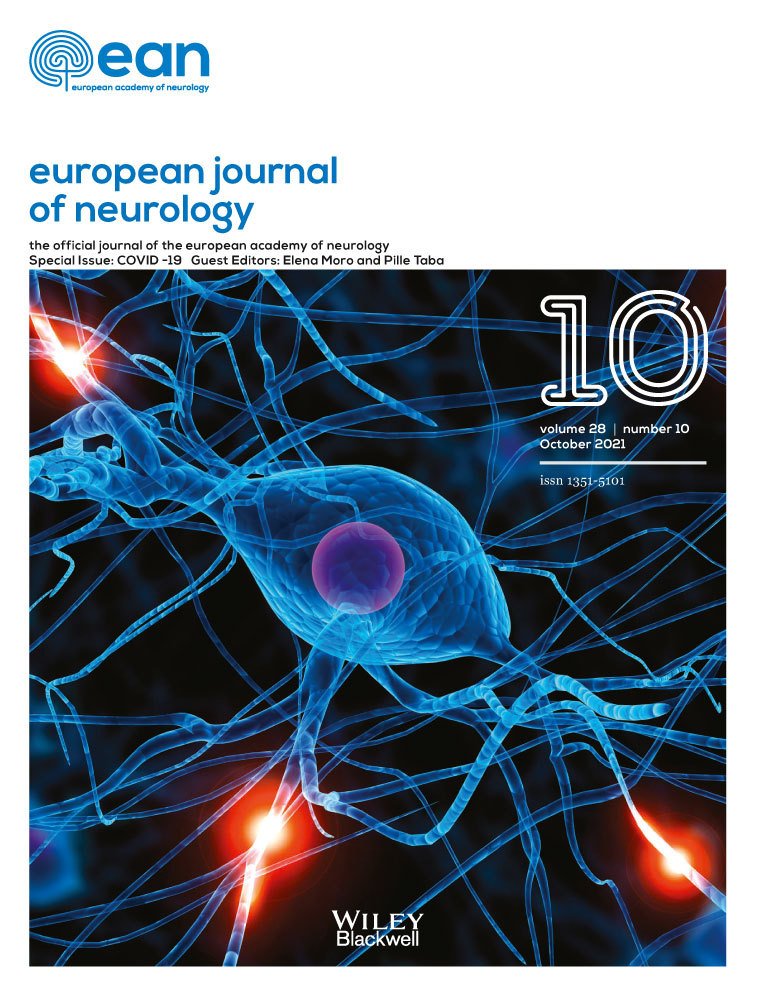Predictive factors for a severe course of COVID-19 infection in myasthenia gravis patients with an overall impact on myasthenic outcome status and survival
Michala Jakubíková, Michaela Týblová and Adam Tesař contributed equally.
Funding information
General University Hospital GIP-20-L-14-212, Ministry of Health of the Czech Republic, Ref. RVO (FNBr, 65269705), Project of specific research Ref. MUNI/A/1600/2020 Brno and the European Reference Network for Neuromuscular Diseases - Project ID 870177. Patient recruitment was partially performed using the national Myasthenia Gravis Registry.
Abstract
Background and purpose
Myasthenia gravis (MG) patients could be a vulnerable group in the pandemic era of coronavirus 2019 (COVID-19) mainly due to respiratory muscle weakness, older age and long-term immunosuppressive treatment. We aimed to define factors predicting the severity of COVID-19 in MG patients and risk of MG exacerbation during COVID-19.
Methods
We evaluated clinical features and outcomes after COVID-19 in 93 MG patients.
Results
Thirty-five patients (38%) had severe pneumonia and we recorded 10 deaths (11%) due to COVID-19. Higher forced vital capacity (FVC) values tested before COVID-19 were shown to be protective against severe infection (95% CI 0.934–0.98) as well as good control of MG measured by the quantified myasthenia gravis score (95% CI 1.047–1.232). Long-term chronic corticosteroid treatment worsened the course of COVID-19 in MG patients (95% CI 1.784–111.43) and this impact was positively associated with dosage (p = 0.005). Treatment using azathioprine (95% CI 0.448–2.935), mycophenolate mofetil (95% CI 0.91–12.515) and ciclosporin (95% CI 0.029–2.212) did not influence the course of COVID-19. MG patients treated with rituximab had a high risk of death caused by COVID-19 (95% CI 3.216–383.971). Exacerbation of MG during infection was relatively rare (15%) and was not caused by remdesivir, convalescent plasma or favipiravir (95% CI 0.885–10.87).
Conclusions
As the most important predictors of severe COVID-19 in MG patients we identified unsatisfied condition of MG with lower FVC, previous long-term corticosteroid treatment especially in higher doses, older age, the presence of cancer, and recent rituximab treatment.
CONFLICT OF INTEREST
The authors declare that the research was conducted in the absence of any commercial or financial relationships that could be construed as a potential conflict of interest.
Open Research
DATA AVAILABILITY STATEMENT
The data that support the findings of this study are available from the corresponding author upon reasonable request.




